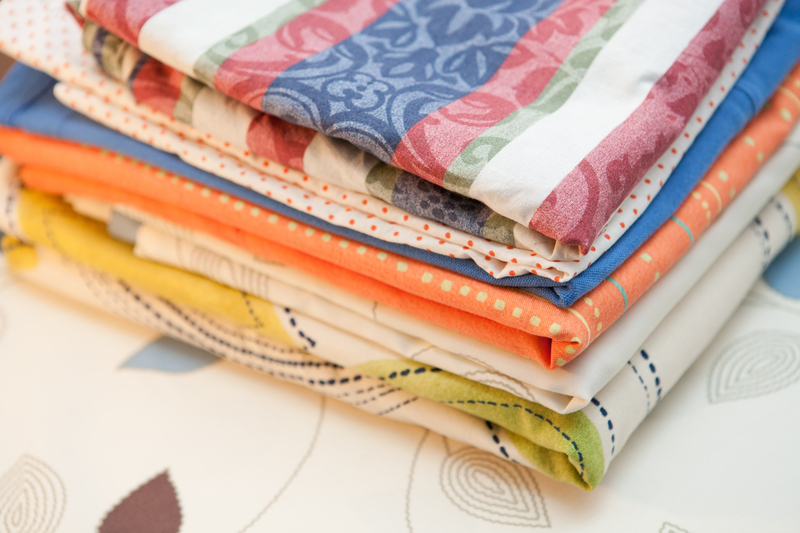Efficient Ways to Transport Your Bed and Mattress Safely
When it comes to moving to a new home or even rearranging your current living space, efficiently transporting your bed and mattress safely is a top priority. Beds and mattresses are significant investments, and ensuring their safe transportation eliminates the risk of damage, dirt, or loss. Whether you are hiring professional movers or going the DIY route, this comprehensive guide covers all the best practices, practical steps, and expert tips for securely moving your mattress and bed.
Why Safe and Efficient Mattress and Bed Transport Matters
Your mattress and bed are crucial for your comfort and health. Mishandling during transport can cause:
- Physical damage such as tears, bends, or broken frames
- Stains and dirt accumulation leading to hygiene concerns
- Loss of structural integrity which reduces lifespan and comfort

Pre-Move: Preparation for Secure Mattress and Bed Transport
Assess the Type and Size of Your Bed and Mattress
Determine the size and type of the bed (twin, queen, king, bunk, platform, or box spring) and mattress. Measuring the dimensions helps in arranging appropriate transportation and packing materials.
Gather the Necessary Supplies
To move your mattress and bed safely, have the right materials on hand:
- Tape measure
- Mattress bag or plastic wrap
- Moving blankets or pads
- Cardboard corner protectors
- Disassembly tools (screwdrivers, Allen wrenches, etc.)
- Protective gloves
- Quality moving straps or ropes
- Heavy-duty tape
- Labels and ziplock bags for hardware
Step-by-Step Guide to Efficiently Transporting Your Bed and Mattress
1. Disassemble the Bed Frame Properly
Efficient bed moving starts with disassembly. Remove the mattress and set it aside. Disassemble headboards, footboards, side rails, and support slats. Keep all screws, nuts, and bolts in a labeled ziplock bag and tape it to one of the bed components. Take photos during each disassembly step. This visual record simplifies reassembly at the new location and ensures you don't miss essential steps or parts.
2. Clean and Protect Each Component
Before wrapping, clean your mattress and bed frame. Sweeping away dust and vacuuming both the mattress and the slats ensures you are not transporting hidden grime or allergens. Use gentle soap and a damp cloth for wooden or metal parts. For mattresses, a fabric-safe cleaner can refresh the surface before packing.
3. Wrap and Secure Your Mattress and Bed
- Use a Mattress Bag: Slide your mattress into a heavy-duty plastic mattress bag. These bags safeguard against dust, moisture, bugs, and physical stains. They're commonly available in varying sizes for a snug fit.
- Secure with Tape: Use packing tape to seal openings. Avoid taping directly onto the mattress material as it may leave residue.
- Protect the Bed Frame: Wrap the bed frame, slats, and other separate elements in moving blankets or thick plastic wraps. Secure with straps or moving bands--never with adhesive tape on wood or painted surfaces.
- Add Extra Protection: Use cardboard or foam corner protectors for sharp or fragile bed frame edges. This is critical for preventing nicks or scratches.
4. Plan Your Route and Moving Vehicle
Choose an appropriate moving vehicle based on the size of your bed and mattress. For king and queen-sized beds/mattresses, a cargo van or moving truck is often necessary. Measure doorways, hallways, and your moving vehicle's loading space to ensure a smooth transition, especially in tight or awkwardly-shaped walkways.
5. Safe Lifting and Carrying Techniques
Implements best practices for safe handling:
- Bend from your knees, not your back, to avoid strain.
- Use moving straps for heavy or unwieldy items.
- Lift with a partner--never move large mattresses or bed frames alone.
- Clear the path of obstacles before moving begins.
Efficient and Safe Transportation Methods
Utilizing Professional Mattress and Bed Movers
Hiring professional moving companies can be one of the most efficient and stress-free solutions for moving beds and mattresses safely. Reputable movers provide:
- Expert packing and wrapping for maximum protection
- Specialized moving equipment for awkward or heavy components
- Insurance coverage for your valuable furniture
DIY Bed and Mattress Transportation: Tips for Success
For those preferring a DIY approach, consider these mattress and bed moving tips:
- Always measure and plan ahead to choose the right sized vehicle.
- Use a mattress carrying case or bag designed for transportation.
- Keep fragile or detailed frame parts well-wrapped and cushioned.
- Use mattress straps or moving bands to prevent shifting inside the vehicle.
- Stack mattresses vertically when space permits, but never lay heavy objects on top.
- Do not tie mattresses or bed frames to car roofs; this is unsafe and can void warranties or cause traffic hazards.
If you lack the necessary vehicle type, consider renting a moving van or using truck rental services for a day.
Special Considerations for Unique Mattress Types
Some mattresses and beds require specific attention during transport. Here are tips for moving the most common types:
Memory Foam and Latex Mattresses
- Never fold or bend memory foam or latex mattresses, as this can cause damage or permanent deformation.
- Use a sturdy box or rigid bag to maintain their shape during the move.
- Lay the mattress flat in the transport vehicle when possible.
Innerspring and Hybrid Mattresses
- Avoid strapping tightly or compressing these mattresses excessively; damage to internal coils is possible.
- Transport them vertically if space is limited, ensuring they are secured and cannot fall.
Adjustable and Specialty Beds
- Disengage motors and electronics (for adjustable beds), following manufacturer's instructions.
- Label electrical components and pack them in protective packaging separate from the main frame.
Unloading and Reassembling Your Bed and Mattress
Once your mattress and bed arrive at their new location:
- Inspect the packaging for any signs of damage or punctures before opening.
- Carefully unwrap all pieces, taking care not to use sharp tools near the mattress fabric or frame finishes.
- Allow the mattress to air out if wrapped in plastic, which also helps dissipate odors.
- Consult your disassembly photos to reassemble the frame in the correct order.
- Reattach hardware using labeled bags for a faster setup process.
- Make sure the bed is level and secured before placing the mattress on top.
Common Mistakes to Avoid During Mattress and Bed Transport
- Skipping Protective Wraps: Leaving your mattress and bed exposed can lead to dirt, stains, and tears. Use protective covers for every move.
- Incorrect Lifting Techniques: Avoid solo heavy lifting and bending at the waist, as this leads to injury and damage.
- Neglecting to Secure Items: Unsecured mattresses or frame parts can shift during transport, risking breakage or loss.
- Transporting in Bad Weather: Rain or moisture can soak into your mattress and ruin it. Schedule your move for dry weather or use waterproof covers.
- Discarding Hardware: Store bolts, screws, and attachments in labeled bags--never toss them loosely into boxes.

Frequently Asked Questions About Efficient Bed and Mattress Transportation
-
Can I fold my mattress to fit it in my car?
Most spring, memory foam, and latex mattresses should not be folded as this can damage their structure. Only specific "bed-in-a-box" types are designed for compression and folding. -
Is it safe to tie my mattress to the roof of my car?
This practice is unsafe, illegal in many areas, and risks damaging the mattress or causing an accident. Always use a suitable vehicle or professional moving service. -
How do I move a large king-size bed?
Disassemble all components, protect each with proper wraps, and use a cargo van for transport. Enlist help to lift and carry heavy parts to avoid injury or damage. -
Should I hire movers for my mattress and bed?
If you lack help or the right tools, hiring professionals ensures safe, efficient moving.
Conclusion: Best Practices for Moving Beds and Mattresses Safely
Successfully transporting your bed and mattress efficiently and safely requires advance planning, the right equipment, and careful handling. Key steps include prepping your mattress and bed for transport, using protective covers, disassembling frames, securing all parts, and employing safe lifting methods. Whether you choose to move on your own or with professional help, following these guidelines will protect your investment, reduce stress, and set the stage for restful nights ahead.
For further peace of mind, always measure twice, lift with care, and use adequate protection. Your bed and mattress are not just furniture--they're vital for your comfort and wellbeing. Handle them with the attention they deserve!
Remember: Moving can be overwhelming, but with the right approach, you can make mattress and bed transportation safe, efficient, and hassle-free.



